Schooner Lamartine
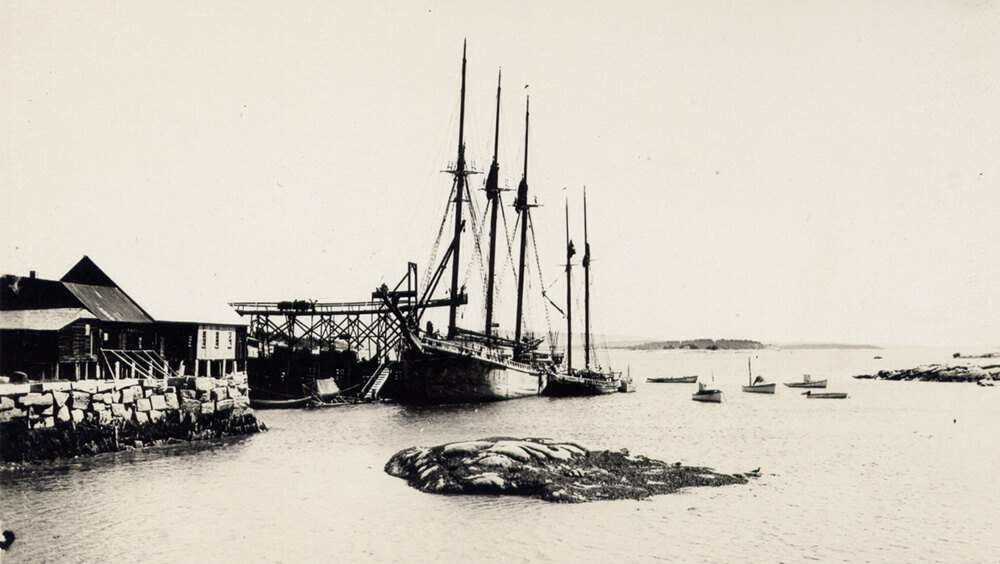
Ship Stats
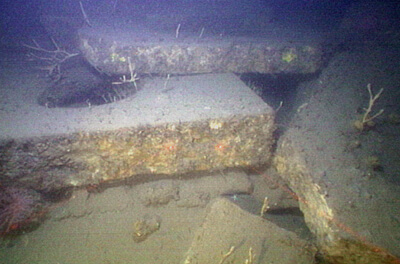
Depth: over 300 feet
Length: 79.9 feet Breadth: 22.4 feet
Depth of Hold: 8.1 feet
Built: 1848 wooden, two-masted topsail schooner, Carleton, Norwood and Company Shipyard, Camden, Maine
Namesake: French writer, poet, and politician, Alphonse de Lamartine, considered to be first French romantic poet.
Port of Registry: USA
Owner: Captain George Washington Thorndike, Camden, Maine
Date Lost: May 17, 1893
Owner at Time of Sinking: Sylvanus G. Haskell, merchant and trial justice, Deer Isle, Maine
Cargo at Time of Sinking: 81 sets of basin heads
Crew: 3 (Captain Eben W. Eaton; Jeremiah Eaton, first mate and captain's brother; and Myron Powers, cook and friend; all from Deer Isle, Maine)
Sunk By: Foundering due to heavy waves that caused cargo to shift.
Survivors: Two out three (one deceased). Myron Powers was washed overboard and not seen again. The Eaton brothers also went overboard, but found safety by clinging to an upside down longboat until they were rescued by Edith M. McInnis.
Data Collected on Site: Side-scan sonar, ROV photography
Significance: Lamartine is a representative type of schooner that hauled many materials and cargo over its career, including timber, logwood (material used in dyes), lime, hay, cooperage (barrels and casks), and granite. On its final journey, it was employed in the granite trade, which, in the late 19th and early 20th centuries, was a major industry in New England as schooners such as Lamartine delivered heavy granite from coastal quarries to growing coastal cities. Granite's tremendous strength made it ideal for large public buildings, bridges, streets, and sidewalks. Lamartine is a physical link to earlier generations that built America's cities, and its cargo of cut granite reveals information and details about New England's contribution to the physical construction of urban America. It was listed on the National Register of Historic Places in 2012.
Present Day

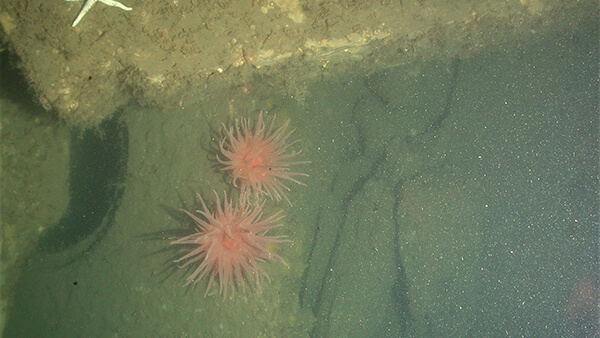
Lamartine's piled basin heads are now home to fishes and colorful anemones. Credit: NOAA/SBNMS and NURTEC-UConn.
Lamartine currently sits in over 300 feet of water off Gloucester, Massachusetts. It was discovered in 2004, but not identified as Lamartine until nearly five years later through the efforts of maritime researcher, Paul F. McCarthy, who found evidence of "cut stone" ascribed to the ship in newspaper archives. This “cut stone” had been noted by archaeologists earlier as they observed granite cargo piles, measuring 52 feet long by 24 feet wide. At the heart of this pile, more than 40 large, angular slabs were recorded, most of which had holes bored through the slab's center. They were determined to be sewer basin heads that covered sewer basins at street level. The holes were for manhole covers that could be opened to allow workers to enter the basin and clean debris. Much of the ship's structure above the sediment has disintegrated, but it is likely that more of the hull remains under the cargo pile which has protected it from ongoing deterioration.
Historical Background

During its 45-year career, Lamartine operated up and down the East Coast in the coasting trade carrying bulk cargoes of lumber, granite, and other commodities. The schooner sailed from New England to as far south as South Carolina, Florida, Louisiana, and Cuba. A group of intrepid Maine treasure hunters even chartered the vessel to salvage a shipwreck off Venezuela.
Lamartine departed on its final voyage from Stonington, Maine to New York City on May 15, 1893. Captain Eben W. Eaton commanded the vessel with his brother, Jeremiah W. Eaton, serving as first mate. A third sailor, Myron Powers, served as the cook and deckhand. Its cargo of granite sewer catch basin heads was consigned to the Booth Brothers and Hurricane Isle Granite Company of New York. The John L. Goss Corporation had contracted the T. Snow and Company quarry to cut the stone while they oversaw the contract and eventual shipment.
On May 17, 1893, two days into its trip south, Lamartine encountered rough seas that caused its cargo to shift and the vessel to capsize. Myron Powers drowned as the schooner sank and the Eaton brothers jumped into the water where they clung to the schooner's overturned yawl boat. Fortunately, the fishing schooner Edith M. McInnis saw Lamartine's distress signal and arrived on the scene shortly after the schooner sank beneath the waves. Crewmen from Edith M. McInnis risked their lives to launch a dory to bring the Eaton brothers aboard. Once Edith M. McInnis arrived in Gloucester, Massachusetts, the Eatons returned home to Stonington via rail.
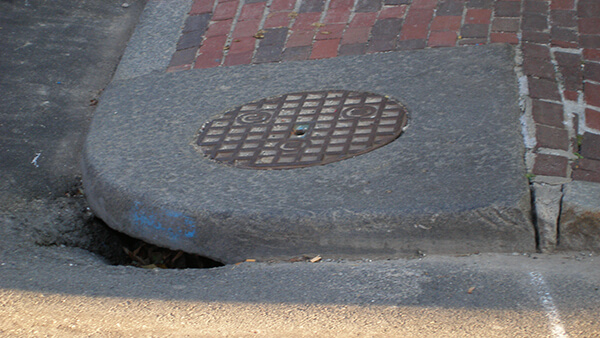
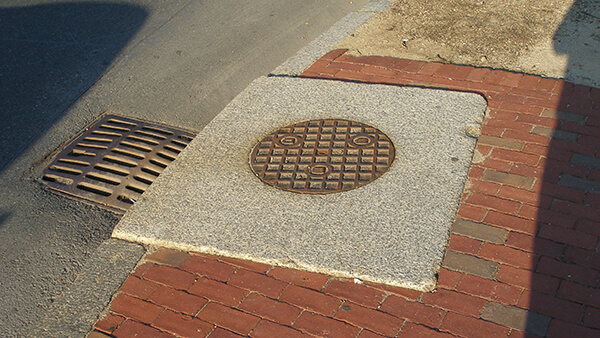
Similar granite basin heads exist even today on corners and along Boston streets.

